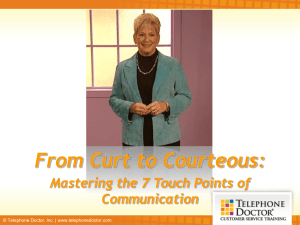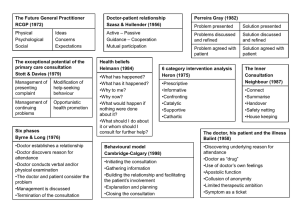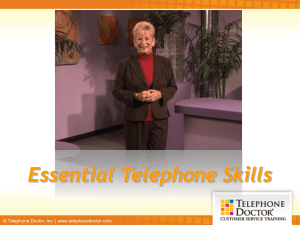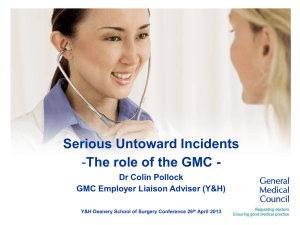summary of six steps to service recovery
advertisement
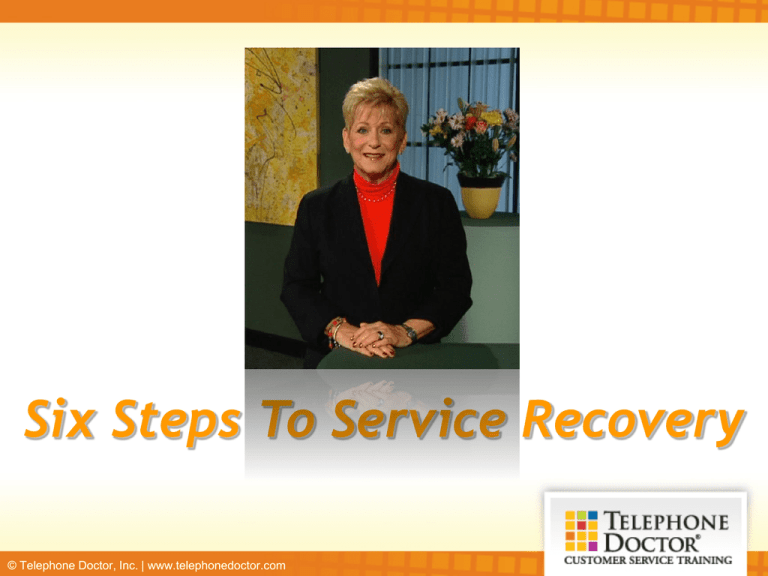
Six Steps To Service Recovery © Telephone Doctor, Inc. | www.telephonedoctor.com You will learn: To demonstrate understanding of the Six Steps to Service Recovery. To gain insight into how to correct problems while taking proactive steps to help manage the customer’s feelings through the use of The Six Steps to Service Recovery. To apply the correct techniques to assure future business despite the problem that occurred. © Telephone Doctor, Inc. | www.telephonedoctor.com Take the Before-andAfter Skills Inventory © Telephone Doctor, Inc. | www.telephonedoctor.com View Program © Telephone Doctor, Inc. | www.telephonedoctor.com What is Service Recovery and Why do we need it? What is the difference between an irate caller and the need for service recovery? What is service recovery? Why do we need service recovery? © Telephone Doctor, Inc. | www.telephonedoctor.com Step #1: Respond Rapidly © Telephone Doctor, Inc. | www.telephonedoctor.com Discuss When is the right time for service recovery? How many calls from a customer should it take to correct a problem? How is a cement mixer similar to providing good service? How is a customer complaint similar to liquid cement? What was the point of the quote from Sir William Gladstone: “Justice delayed is justice denied.” © Telephone Doctor, Inc. | www.telephonedoctor.com Telephone Doctor® Prescription Respond rapidly. As soon as it’s reported. Instantaneously, if possible. Delay irritates a customer even more. Delay amplifies anger. An upset customer is easier to work with if you smooth the problem over right away. Any delay and the customer’s sense of importance is affected negatively. Customers want justice and they want it NOW. Management needs to know about repetitive problems to solve the problem and ultimately, save time and money. © Telephone Doctor, Inc. | www.telephonedoctor.com Step #2: Take Ownership © Telephone Doctor, Inc. | www.telephonedoctor.com Discuss From a customer’s perspective, how many calls should it take to correct a problem? What is possible if you respond rapidly and with sincerity? What is likely to happen if the customer doesn’t feel you’re being sincere? When should you tell a customer “we value your business and want you to continue to be our customer”? © Telephone Doctor, Inc. | www.telephonedoctor.com Telephone Doctor® Prescription The ideal situation is for only one person to handle any questionable situation. The more often a customer tells the story, the angrier he/she will get, often vowing to take future business elsewhere. Immediate and sincere response often encourages future business. End your service recovery by reminding your customer: “we value your business and want you to continue to be our customer”. © Telephone Doctor, Inc. | www.telephonedoctor.com Step #3: Apologize Sincerely © Telephone Doctor, Inc. | www.telephonedoctor.com Discuss What is a critical step to service recovery? What’s wrong with the phrase: “Sorry ‘bout that”? How does an apology need to be delivered? © Telephone Doctor, Inc. | www.telephonedoctor.com Telephone Doctor® Prescription A critical step to service recovery is a sincere apology. “Sorry ‘bout that” is perceived as an insincere apology and should be avoided. Apologies must be sincere and with understanding of how the problem affected the customer. You may have to apologize several times a day, but it’s always the first time your customer has heard it. The slightest bit of insincerity or boredom and service recovery goes down the drain. © Telephone Doctor, Inc. | www.telephonedoctor.com Step #4: Solve the Problem © Telephone Doctor, Inc. | www.telephonedoctor.com Discuss What does not solve the problem for the customer? How does the customer perceive you solving the problem? What was the difference between the way Paige first handled the problem and the second way? What do customers expect? © Telephone Doctor, Inc. | www.telephonedoctor.com Telephone Doctor® Prescription Customers are not interested in your correcting them with company jargon. When solving a problem, customers are interested in their schedules, not the company’s. Substituting one problem for another is not service recovery. Customers want to see you as confident and empowered to solve the problem. Customers will perceive you as solving the problem by going the extra mile and double-checking all options. © Telephone Doctor, Inc. | www.telephonedoctor.com Step #5: Manage the Feelings © Telephone Doctor, Inc. | www.telephonedoctor.com Discuss What is the heart of service recovery? What needs to be done after solving the problem? What DON’T you want to do to a customer? What should you DO? Why give something extra? Isn’t what you say enough? © Telephone Doctor, Inc. | www.telephonedoctor.com Telephone Doctor® Prescription Managing the feelings of the customer is the heart of service recovery. After solving the problem, you need to work on the feelings involved. Don’t tell a customer you know exactly how they feel. The customer is looking for something extra for their time and inconvenience. The something extra doesn’t need to be expensive, but it does need to be something the customer values. © Telephone Doctor, Inc. | www.telephonedoctor.com Step #6: Verify Satisfaction © Telephone Doctor, Inc. | www.telephonedoctor.com Discuss At the end of a service recovery, how do you know if you’ve really solved the problem? If the answer is not complete satisfaction, what should you do? What does it usually take to find complete satisfaction? © Telephone Doctor, Inc. | www.telephonedoctor.com Telephone Doctor® Prescription To know if you’ve really solved the problem, ask the customer. Use some sort of scale for your customer to gauge where your service recovery is. Probe to determine what needs to be done to achieve maximum satisfaction. It is often a small, overlooked detail that stops the customer from being completely satisfied. Ask and you’ll find out. © Telephone Doctor, Inc. | www.telephonedoctor.com The WISH Statement: What to do when they ask for the “moon”. Why is the WISH statement used? A sample WISH statement is: “I WISH we could give you a ________. That would be great. Unfortunately, it’s not an option we have. What we can do is ____.” © Telephone Doctor, Inc. | www.telephonedoctor.com Telephone Doctor® Prescription Learn the WISH statement and use it whenever it’s needed. Caution: Beware of overusing it. © Telephone Doctor, Inc. | www.telephonedoctor.com Take the Before-and-After Skills Inventory Again. © Telephone Doctor, Inc. | www.telephonedoctor.com ANSWERS 01. F 02. C 03. T 04. B 05. F 06. D 07. T 08. C 09. F 10. A 11. F 12. D 13. F 14. A 15. T A CALL TO ACTION! Memorize the following steps. Keep them in mind every time you use the telephone. Practice! © Telephone Doctor, Inc. | www.telephonedoctor.com SUMMARY OF SIX STEPS TO SERVICE RECOVERY Respond Rapidly. Take Ownership. Apologize Sincerely. Solve the Problem. Manage the Feelings. Verify Satisfaction. © Telephone Doctor, Inc. | www.telephonedoctor.com Six Steps To Service Recovery © Telephone Doctor, Inc. | www.telephonedoctor.com

